Production Year 2021
Baton of Memories
DC372119![]()
テレメンタリー「記憶のバトン」 [ABC]
![]()
![]()
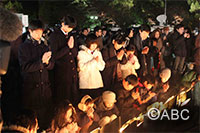
|Length : 27min |Year : 2021 |
Yoko Nakajima (68), painter and teacher at an art studio in the city of Kobe, brought cheer back into the lives of children there who had lost their smiles after the Great Hanshin-Awaji Earthquake of 1995 by having them paint pictures. When the Great East Japan Earthquake struck in 2011, unable to sit by doing nothing, she packed art supplies into her car and headed for the devastated area of Northeast Japan. Because school gymnasiums were being used as morgues and other buildings were unusable, she held art classes outdoors, on school campuses. For years thereafter, she continued to travel to the devastated area using art as a tool in her effort to rebuild the lives of the children and bring them cheer. One of the schools she visited was Hashikami Elementary School in the city of Kesennuma. Momoka Goto and Kaede Iwabuchi, who were first graders at the time of the disaster, still have clear memories of that day. In 2018, they participated in a memorial event for the Great Hanshin-Awaji Earthquake in Kobe. Seeing the children of Kobe attending the memorial and how the devastated city had bounced back, the two girls began to feel that they wanted to do something for Kesennuma, so they started storytelling activities that would talk to people about what had happened in 2011. 2021 marked the 10-year anniversary of the Great East Japan Earthquake. Many of the planned events had to be cancelled due to the COVID-19 pandemic, but in November 2020, Ms. Nakajima paid a visit to Kesennuma. She planned to pass on to Momoka and her classmates, now high school students, a figurative “baton” that embodied their hopes for the rebuilding of their town….
 Endless Wonders | Endless Wonders 2021
Endless Wonders | Endless Wonders 2021
ED322100![]()
ふしぎエンドレス 2021年度 [NHK]
![]()
![]()

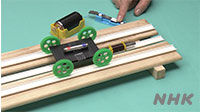

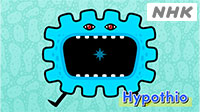


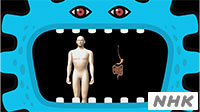
|Length : 10min. X8 |Year : 2021 |
(5th How can you make motors spin?)
In this episode, children make predictions on how they can make motors spin and think about how they can verify their ideas. What should happen if your prediction is correct? Give it a thought!
(5th How does it move forward?)
In this episode, children think about why a toy car is able to move on a rail. The rail is fitted with electromagnets, and the toy car has a magnet on it. Why is it that the car can move froward? And how would it be possible to make it move even further?
(6th What happens when things burn?)
What happens to air when something is burned? The children use a lit candle and limewater to check what happens to each of the main gases that make up the air, namely nitrogen, oxygen, and carbon dioxide for clues to hypothesize on. Will the children in this episode be able to gain a reasonable understanding of the phenomenon? Tune in to find out!
(6th Why do fires go out?)
Why do fires go out? The children use limewater and a gas detector to check each of the main gases that make up the air, namely nitrogen, oxygen, and carbon dioxide for clues to hypothesize on. Join the children and the Wonder Monsters as they set out to find out more about this scientific wonder!
(6th Where does starch come from? ーPlanning the experimentー)
Starch is the nutrient plants thrive on. To learn where exactly starch can be found in a plant, children look at the root, stem, and leaves of a plant, and discover that starch is actually stored only in large amounts in the leaves. They hypothesize why that is the case, and then come up with ideas for an experiment that would enable them to examine whether their hypothesis is correct. What great ideas will the children come up with? Tune in to find out!
(6th Where does starch come from? ーObservationsー)
Plants thrive on starch. The children conduct an experiment to test out their hypothesis that starch is produced when sunlight shines on the leaves. They then look at the results of the experiment and think further about the phenomenon. Join the children as they put on their thinking caps to come up with great ideas. And will they be able to reach a reasonable understanding of how plants produce starch? Tune in to find out!
(6th The structure of the human body ーIngestion and respirationー)
What happens to the food we eat and the air we breathe after we put them in our bodies? The episode includes footage that will make the viewers think about the bodily functions that allow us to take in nutrients and oxygen, both of which are essential for our survival. Will the children in this episode be able to gain a reasonable understanding of the phenomenon? Tune in to find out!
(6th The structure of the human body ーObservationsー)
What happens to the food we eat and the air we breathe after we put them in our bodies? The episode includes footage that will make the viewers think about the bodily functions that allow us to take in nutrients and oxygen, both of which are essential for our survival. Will the children in this episode be able to gain a reasonable understanding of the phenomenon? Tune in to find out!
 TEXICO | TEXICO
TEXICO | TEXICO
ED332100![]()
テキシコー 2021年度 [NHK]
![]()
![]()

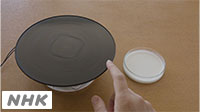
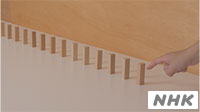
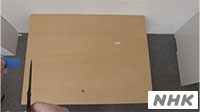
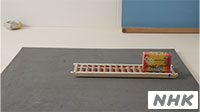
|Length : 10min. X5 |Year : 2021 |
(Episode 6)
(Episode 7)
(Episode 8)
(Episode 9)
(Episode 10)
 Escuchemos a la Tierra | ¿Qué causa las erupciones volcánicas?
Escuchemos a la Tierra | ¿Qué causa las erupciones volcánicas?
ED622107![]()
噴火の仕組みを学ぼう [NHK]
![]()
![]()
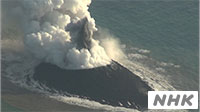
|Length : 10min |Year : 2021 |
Aprendamos qué causa las erupciones volcánicas y cómo ponernos a salvo en caso de una erupción
 Escuchemos a la Tierra | ¿Qué sucede antes de que un volcán haga erupción?
Escuchemos a la Tierra | ¿Qué sucede antes de que un volcán haga erupción?
ED622108![]()
噴火の前に何が起こる? [NHK]
![]()
![]()
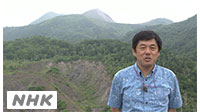
|Length : 10min |Year : 2021 |
¿Qué sucede antes de que un volcán haga erupción? Por medio de experimentos, aprenderemos sobre las señales de advertencia de una erupción, tales como terremotos y deformaciones en el suelo.














